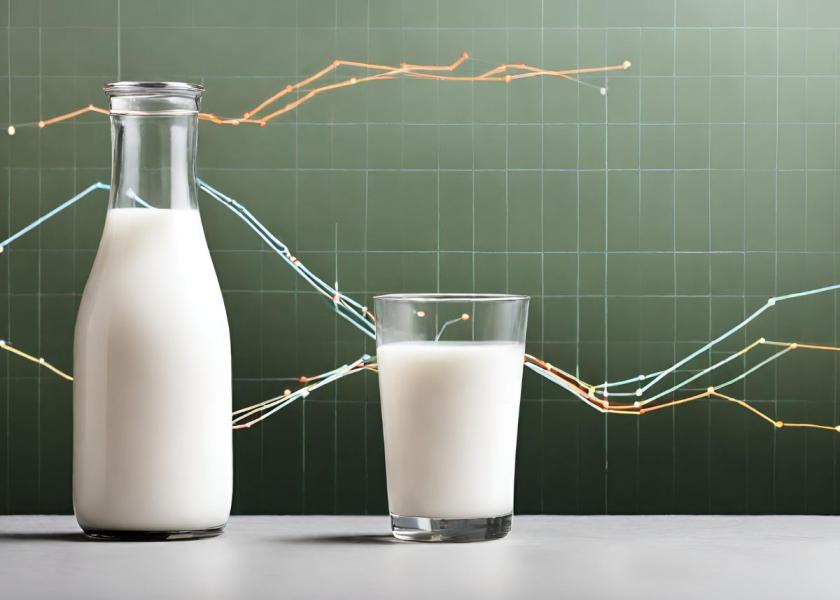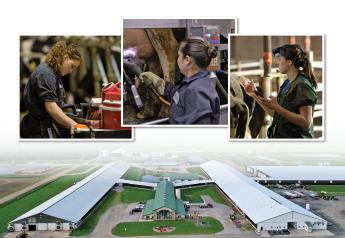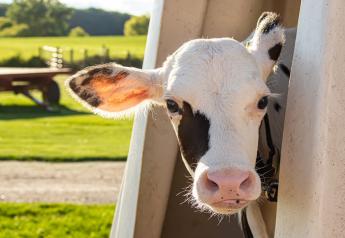How Much Impact Has Avian Flu Had on Dairy Prices?

It seems as if the dairy industry has taken the Highly Pathogenic Avian Influenza (HPAI) in stride. There have now been eight states that have reported dairy herds with the avian flu virus with North Carolina and South Dakota being the most recent. The market is uncertain as to the level of impact this may have on consumer demand or milk production. Since the discovery of the virus in dairy cattle, it has seemingly had a greater impact on the beef market than the dairy industry. Cattle futures have declined because of the uncertainty of traders over the impact it may have on beef demand if it is found in beef cattle which could cause beef demand to decline. However, there seems to be little, if any, impact on younger dairy cattle. The beef industry generally consists of younger cattle being processed for the food supply which should have little or no impact anyway.
In the dairy industry, a bullish or bearish argument can be made either way. Bullish because it could reduce overall milk production if it is ongoing and cannot be contained. Cows impacted by the virus reduce feed consumption and drop in milk production for a period. This impacts the lactation curve reducing the cow's annual milk output for the year. Bearish because it could reduce demand for milk if consumers feel they are at risk and reduce consumption even though it is safe through pasteurization. But so far, it seems to have not had any impact on the market. Price fluctuations have been the result of buyers of the physical commodity on the CME daily spot market doing normal business as orders are being filled and purchases are made for inventory purposes. This has created some volatility as milk futures have been reacting to the underlying cash prices. Spring flush leaves sufficient milk supply available for both bottling and manufacturing which has limited upside price potential. Buyers on the spot market have not yet been concerned over the availability of supply.
The positive aspect of the market is that international demand is improving overall. Dairy exports did well in February finally posting a gain after 12 consecutive months of year-over-year declines. Exports on a milk solids basis set a record for February. Cheese exports so far this year show an increase of 22.1% year-over-year. Keep in mind that there was one more day than a year ago. When a conversion is made to compare the same number of days to last year, cheese exports were up 20.0%, a strong number that may indicate international demand may be solid this year. Exports of butter remain and anchor on that category. February exports were down 10.0% from a year earlier and down 32% when adjusted for leap day.
Enrollment for the 2024 Dairy Margin Coverage program will end on April 29th. Those who have not yet signed up need to do so to take advantage of this program. It is another important program for risk management.
USDA has released has proposed some changes to livestock programs. This may reduce some of the accuracy and transparency of certain reports. They plan on reducing the number of published states on the January Cattle Inventory report from 50 states to 31 states. The December Quarterly Hogs and Pigs report will report numbers from just 16 states of the 50 states. They plan to reduce the number of published states in the Quarterly Milk Production report from 50 states to 33 states. The 17 nonpublished states will be Alabama, Alaska, Arkansas, Connecticut, Delaware, Hawaii, Louisiana, Massachusetts, Mississippi, Montana, New Hampshire, New Jersey, North Dakota, Rhode Island, South Carolina, West Virginia, and Wyoming. These states will be listed as an Other States category. The changes in these reports may reduce transparency, increase uncertainty, and increase volatility in these markets at certain times.
For more on HPAI, read:
- HPAI Fails to Impact Dairy Prices So Far - Why Markets Could Actually See Some Growth in the Near Future
- Rare Human Case of Bird Flu Confirmed. Officials Believe it Began on Texas Dairy
- Six Questions One Industry Veterinarian Says She Is Asked Most Often About HPAI
- Dairy’s FARM Program Offers Free Biosecurity Resources to Help Prevent HPAI
Robin Schmahl is a commodity broker with AgDairy, the dairy division of John Stewart & Associates Inc. (JSA). JSA is a full-service commodity brokerage firm based out of St. Joseph, MO. Robin’s office is located in Elkhart Lake, Wisconsin. Robin may be reached at 877-256-3253 or through the website www.agdairy.com.
The thoughts expressed and the basic data from which they are drawn are believed to be reliable but cannot be guaranteed. Any opinions expressed herein are subject to change without notice. Hypothetical or simulated performance results have certain inherent limitations. Simulated results do not represent actual trading. Simulated trading programs are subject to the benefit of hindsight. No representation is being made that any account will or is likely to achieve profits or losses similar to those shown. There is risk of loss in trading commodity futures and options on futures. It may not be suitable for everyone. This material has been prepared by an employee or agent of JSA and is in the nature of a solicitation. By accepting this communication, you acknowledge and agree that you are not, and will not rely solely on this communication for making trading decisions.







